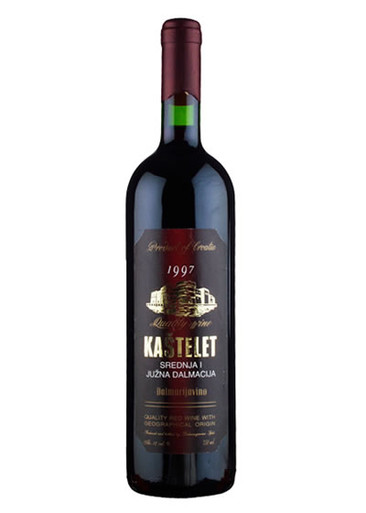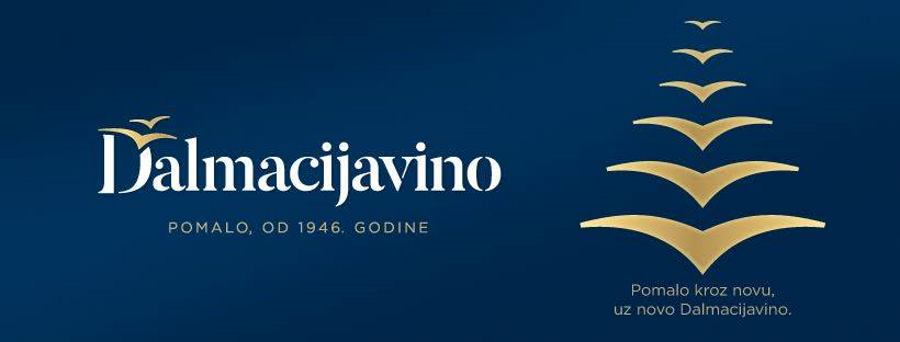Marketing
Dalmacijavino - Pronađi pratnju
CellarTracker is the world's largest collection of wine reviews, tasting notes and personal stories from people who love wine.

Click here: Dalmacijavino
Naglašava da je zahvaljujući tome ne samo naučio mnogo o različitim običajima, kulturama i vjerama nego je i stekao brojne prijatelje u poslovnim krugovima diljem svijeta. Total vineyard acreage fell by over 2,000 hectares to 3,500 hectares under vine. No, kako to kod nas već zna biti, postupak na sudu se otegao, prvo zbog iznenadne žalbe države čiji su predstavnici, iako su od početka u svemu sudjelovali, odjednom zaključili da su kupcu prodane i neke nekretnine čiji je stvarni vlasnik RH.

Pitali su me kako imamo strpljenja. Splitska tvrtka imala je ispostave u , , te podrume u Splitu, i , Bolu, Komolcu i u Šibeniku. All our products can be found and in our shops in Split, Solin, Kastel Stari, Trogir, Drnis and Jelsa.

DALMACIJAVINO SPONZOR ADRIATIC GASTRO SHOW-a 2018. - Mi smo za to doznali iz novina, i svi smo ga pitali zašto sa 75 godina ulazi u takav posao - sjeća se razvoja događaja Diel-Zadro. Specijaliziran je za ilustraciju postera, brandova, ključnih vizuala, naslovnica i murala.

Text by Ivana Krstulović Carić, dipl. Total vineyard acreage fell by over 2,000 hectares to 3,500 hectares under vine. The economic and social impact would be felt for decades to come, resulting in a further decline in production as many residents of the islands including Hvar abandoned their vineyards and homes to go abroad to seek work and a means of steady income. They introduced modern method of grafting grapes onto phylloxera-resistant American rootstocks and shared the technology with local wine growers. Zavala World War I brought the Italian occupation of Hvar, during which time the Croatian language and culture were suppressed. Soon thereafter Hvar was absorbed into the newly-founded Kingdom of Serbs, Croats and Slovenians, which later became the Kingdom of Yugoslavia. The Great Depression 1929-1932 had an obviously negative impact on wine production, and many winemakers and co-operatives, because of large debts, imploded and ceased to exist. As a result, the local population set off on another large exodus to distant countries such as the USA, Chile, Argentina, New Zealand and Australia, where they hoped to find new lives and jobs. Today you can still find living witnesses of this hard time. This meant that to buy 20kg of flour, one had to sell 100 liters of wine. Modern mechanization, vehicles and roads were unheard of in these times. In order to reach the vineyards on the south slopes of Hvarske Plaže and the wine cellars of Ivan Dolac, wine-growers were required to climb over steep heights of Vorh Mountain. The summit of Hvar island It is interesting to note that before the arrival of phylloxera, mostly white indigenous grapes were grown on the south slopes of Hvar: Bogdanuša, Mekuja, Parč, Kurtelaška, Vugava. Only later did Plavac Mali, the most widely-planted red grape in Dalmatia, come to dominate and prevail in the area. Plavac Mali grapes photo by Cliff Rames Up until World War II, every town on the south side of the island had its own quay where boats would dock to buy wine. Traders would visit wine sellers, sample the wines and set their prices. The price of wines from Hvarske Plaže was always significantly higher than those from the north side of the island where the grapes were of lower quality and sugar levels. Transporting the wine from the cellars to the boats was a challenge due to the steep slopes. Donkeys often bore the burden of carting the wine from villages situated far from the sea to the docks. Once at the sea, the traders would fill wooden barrels with the wine and then throw them into the sea, where they were picked up by the boats. Sometime after World War II, Peroslav Carić Slavko noticed a new invention — rubber hoses — while visiting a marketplace, and he purchased some 2000 meters of hose. His idea to use the hose for pumping wine from the seaside stone reservoirs into the barrels was a success, and he soon offered his service to all the villages on the south side of Hvar, as well as a few on the island of Brač. Pitve—Zavala tunnel With the building of the Pitve—Zavala tunnel in the early 1960s, life became easier for the locals, who no longer had to each make wine in their own cellars and then transport it to the buys. Instead they transported the grapes through the tunnel to the big wineries on the north side of Vorh Mountain for processing. But this progress was not necessarily good news. The large wineries, such as Hvarske Vinarije, Dalmacijavino, and VinoProdukt today the cooperative Svirče , shifted into quantitative winemaking. Quality diminished but was offset by positive developments regarding modernization and better organization of production, brands and sales. The era of Socialism brought further degradation of quality and the number of acres under vine, due to the disparaging attitude towards agriculture and farmers. Today it is estimated that there are only 300-500 hectares of vineyards on Hvar, a huge decline from the 5,750 hectares of the mid 19 th century. However, a reassessment of current vineyard acreage is underway, which will hopefully provide more precise data about present day viticulture. One thing is clear: we should endeavor to preserve the things most dear to us — our heritage and our vineyards — because crises come and go. Vineyards do not grow overnight. We must learn from the mistakes of our past. Vineyards in Svirče, north side of tunnel photo by Cliff Rames Unfortunately, he lost almost all the value of his investments and savings when the Austrian Crown currency at the time was converted to the Yugoslavian Dinar. He never accomplished his dream of growing quality grapes in his new vineyards. Note: More about the development of wine production on Hvar and the relationships between local winemakers will be covered in subsequent articles. Elected to be president of the Association of Hvar Winemakers is Mr. Andro Tomić of Bastijana winery in Jelsa. Marija Gabelić was chosen as vice president, and the author of this article, Ivana Krstulović Carić, will serve as secretary. Neretvans: Citizens of the Principality of Neretva 7th century. Neretva is a river valley and its surrounding delta area in south Dalmatia, Croatia. Svirče, Sveta Nedilja, Jelsa, Vrboska, Stari Grad, Hvar, Zavala: Towns on the island of Hvar. Hvarske Plaže or Plaže: a sub-appellation on the island of Hvar — considered the best on the island. Nationalization: The act of seizing land or other private property and converting it into public ownership, as occurred during the communist years when Croatia was part of former Yugoslavia. Macchia: Scrub land biome in the Mediterranean region.
Dalmacijavino Boat Party by Vedran Sesartić
Uvijek smo to radili na uspješnim primjerima i nikad nismo ulazili u problematične firme i države. Ako ne dobiju svoj novac, najavila je još i veće prosvjede. Prosvjednike je na kraju u Saboru uveo mostovac Miro Bulj i smjestio ih na galeriju. Tako je i lajtmotiv na svim etiketama vina i većine jakih alkoholnih pića ilustracija izvedena u tušu tzv. Web stranica Pravni prethodni Dalmacijavina bila je tvrtka Vinalko, osnovana godine s ciljem revitalizacije vinarske industrije na čitavom području. Hrvatski kralj šećera, koji se je cijelu karijeru bavio isključivo proizvodnjom, s ponosom je svog unuka predstavio novinarima prije dvadesetak dana. Marija Gabelić was chosen as vice president, and the author of this article, Ivana Krstulović Carić, will serve as secretary. Osnovna djelatnost je proizvodnja , i. Elected to be president of the Association of Hvar Winemakers is Mr. Danica Stipović iz Nezavisnog sindikata Dalmacijavina kazala je da su iz Splita u Zagreb došla tri autobusa prosvjednika. But this progress was not necessarily good news.
[Najbolja poza za zatrudniti|Vezeni most|Ženski sex]
Post je objavljen 27.12.2018. u 04:12 sati.